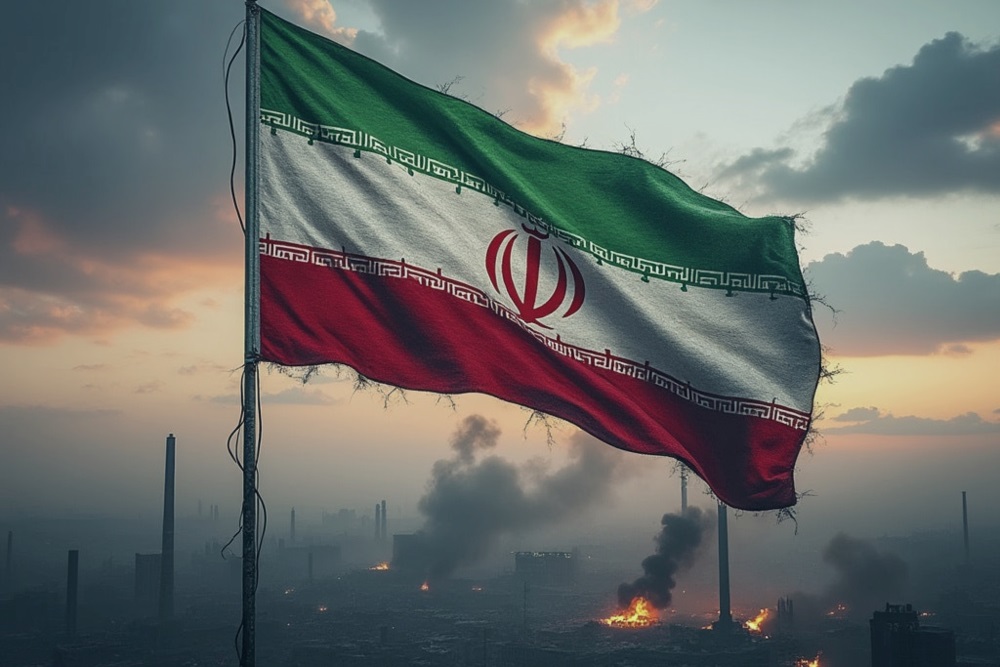
Iran’s standing as a regional power has unraveled under the weight of devastating military and strategic blows suffered in its conflict with Israel, compounded by US intervention and the earlier disintegration of its proxy network.
The rapid degradation of its nuclear program, military capabilities and regional influence marks a dramatic shift in Middle Eastern power dynamics.
While Iran retains some potential for recovery, its current trajectory signals a diminished role with far-reaching implications for regional security and stability.
Crippled Nuclear Ambitions
Israeli airstrikes launched on June 13 targeted Iran’s nuclear infrastructure, with US bunker-buster bombs and Tomahawk missiles later obliterating Tehran’s main nuclear facilities in Fordow, Natanz, and Isfahan.
These strikes set back Iran’s nuclear program by years, dismantling a key pillar of its strategic deterrence and regional leverage. Without a credible nuclear threat, Iran’s ability to intimidate adversaries or negotiate from a position of strength is severely curtailed.
Military Degradation
Israel’s air superiority and superb intelligence, demonstrated by strikes in wide areas of Iran, exposed the vulnerability of Iran’s air defenses and limits of its military power.
The elimination of top military commanders and destruction of critical infrastructure, including missile sites and military bases, gutted Iran’s conventional capabilities.
In parallel, Iran’s missile and drone attacks on Israel failed to achieve any strategic impact, while Tehran’s retaliatory strike on the US airbase in Qatar was limited and ineffective, underscoring a diminished capacity to project power or respond symmetrically.
Proxy Network Collapse
Iran’s Axis of Resistance has been dramatically weakened by Israel’s military operations. Most notably, Hezbollah’s leadership was wiped out in a rapid sequence of IDF strikes, with no significant retaliation.
The fall of the Assad regime in Syria in December 2024 severed Iran’s supply lines to Lebanon, stripping Tehran of a key piece of its regional grand vision. This loss of asymmetric reach significantly curbs Iran’s ability to project its power across wide areas and directly threaten Israel.
Iranian Vulnerabilities
The inaction of Russia and China, coupled with support for Israel in most Western capitals, highlights Iran’s isolation. [here’s a detailed report on Tehran’s fragile alliances with Moscow and Beijing]
Economically, Iran faces ongoing struggles and perpetual crises and disruptions, further constraining the regime’s ability to repair domestic infrastructure and invest in external projects to bolster its regional influence.
The Iranian regime also faces mounting internal pressure, with public discontent likely exacerbated by military humiliation and economic strain.
While no immediate signs of regime change exist, the loss of strategic assets and regional clout could further erode the Islamic Republic’s domestic legitimacy and threaten its grip on power.
Strategic Implications
Iran’s collapse as a regional power reshapes the Middle East. Israel emerges as the dominant military actor, with the US reinforcing its strategic primacy. The Sunni bloc, led by Saudi Arabia and UAE, may fill the vacuum, while Turkey and Qatar could expand influence.
However, a weakened Iran could still destabilize the region, by continuing to fuel extremism and utilizing proxies as Tehran seeks to regain footing. Moreover, some caveats should be noted:
Resilience Through Asymmetry: Iran’s history of adapting via low-cost, high-impact asymmetric tactics could allow it to rebuild influence over time.
Geopolitical Leverage: Ties with Russia and China, though limited and underdeveloped, provide diplomatic and economic lifelines that could mitigate total collapse.
Domestic Cohesion: The regime’s ability to suppress dissent and rally nationalist sentiment among some sectors of the population may delay internal fracturing, preserving some capacity for recovery.
Ceasefire Dynamics: A ceasefire, if it persists, could buy Iran time to regroup, though it would likely come with concessions that limit its strategic ambitions.
In the final analysis, Iran’s regional power status has collapsed due to the combined impact of military devastation, proxy network disintegration, and strategic isolation.
While latent capabilities and historical resilience offer pathways for partial recovery, the scale of current losses likely mark a severe blow to Iran’s dominance.
The Islamic Republic may face a prolonged period of diminished influence, with its regional role contingent on its ability to navigate a hostile geopolitical landscape from a position of growing weakness.


